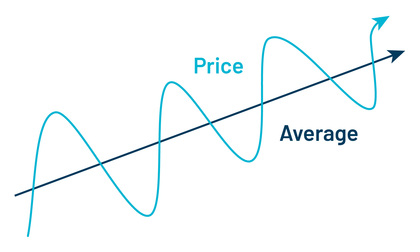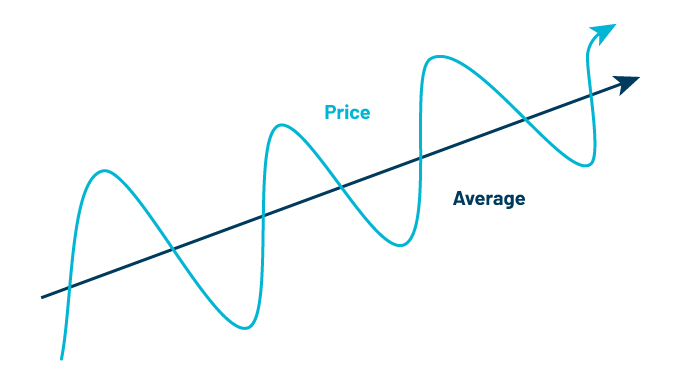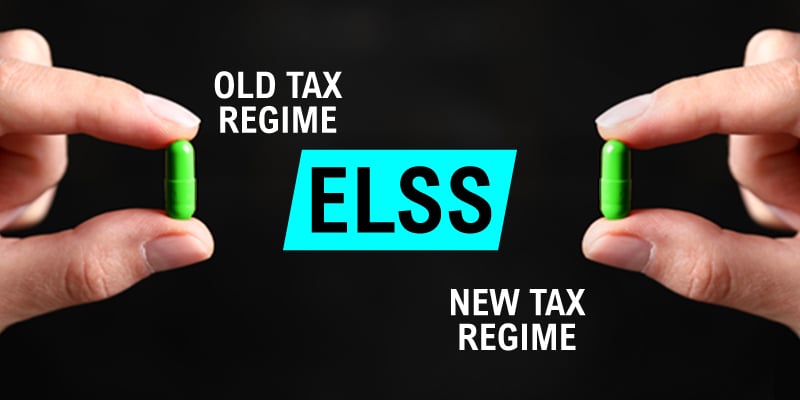The Recipe For Sound Sleep - Warm Tea, Soothing Music and...
Everyone loves a good story. Listening and sharing stories is a part of our DNA. It starts from our childhood with stories from grandparents, cartoons, and books, and continues as we mature with novels, movies and gossip! The human brain processes stories easily, and we can create a story for anything and everything.
But what do stories have to do with the markets and investing?
We all know, over the long-term, the equity markets trend up. In the short term, the markets oscillate between high valuations and low valuations due to emotions of greed and fear. Stories influence emotions, and emotions influence markets in the short term.


Let’s consider the words of wisdom of Birbal from the famous childhood story characters Akbar and Birbal. Akbar once challenged Birbal to write a line that “will make you sad when read in happy times, and happy when read in sad times.”
Birbal wrote, “This time will pass soon.”
Birbal shared a powerful concept that day - one that is very difficult to internalize in life, and also while investing. When market sentiment is positive, we confidently act as if the upward journey of the stock market will always continue.
Let’s look at a time period from January 2003 to January 2008. The India story was booming - the trajectory of the equity markets was like a rocket! But what goes up must come down. And when the “equity rocket” decides to come back to Earth and the markets correct… we assume it will be perpetually grounded and that market sentiment will remain sour.
When your sentiment is low, what helps? RETAIL THERAPY!!! Guess what? That works for investing too! One should buy more equities when market valuations are low and reduce equity exposure (sell) when the valuations are high. Buy low, sell high? Perfect theory. However, it is very difficult to put into practice as emotions generally prevail over the brain. Many investors often walk away when they should dive in - often quitting at the wrong time and inhibiting long-term wealth creation. We all know the challenges… the stories that drive our emotion vs trusting our brain to do the right thing.
But, what is the solution?
DSP Dynamic Asset Allocation Fund (DAAF)
The DSP DAAF dynamically allocates capital between equity and debt based on a pre-set model (based on the Buy Low, Sell High Mantra).
When the market offers favorable (cheap) equity valuations, which may have more potential for growth and thus may be more likely to generate favorable returns for the investor, the fund automatically invests more equities. Maximum Equity - 80%. When equity valuations are expensive, the fund reduces equity allocation and increases debt/arbitrage allocation to maintain the balance. Minimum Equity - 20%.
Think of DSP Dynamic Asset Allocation Fund as driving an automatic car. When driving on an empty road at full speed, the car shifts to the highest gear automatically. DSP DAAF, too, automatically adds more horsepower and shifts more funds towards equity when it sees that the market has upside potential. DSP DAAF also reduces equity allocation and increases debt allocation when market valuations are high. This constant rebalancing of capital cushions the investment from market volatility, ultimately, giving the investor a smoother investing experience.
How has DAAF worked in 'real life'?
Due to the panic associated with the COVID-19 pandemic and its impact on the economy, in March 2020, the global markets corrected sharply. Taking advantage of this correction in prices and the attractive valuations, DSP DAAF increased its equity allocation to 80%. As a result, during the first three months of 2020, when Nifty corrected by ~38.4% due to COVID-19 fears, the DSP Dynamic Asset Allocation Fund corrected by ~17.9%1 due to the rebalancing of the portfolio. DSP DAAF applied the principle of buy low and sell high.
For an investor to keep track of market movements and accordingly rebalance their portfolio manually can get overwhelming and stressful. Investors may also get swayed by their stories and emotions. However, DSP Dynamic Asset Allocation Fund is immune to emotions in the market. It acts solely based on rules and formulas that automatically balance the debt and equity allocations for the fund. Classic buy low, sell high.
How does the DSP Dynamic Asset Allocation model determine equity weightage?
It helps to know the technicalities of your investment product, just like it helps to know the inner workings of your automatic car, though both are not exactly a mandate.
The basics of the DSP DAAF Model
The fundamental factors used to determine equity allocation are a combination of the Nifty 50 price-to-earnings (P/E) and price-to-book value (P/B) ratios. An average percentile score of P/E ratio and P/B ratio is used to gauge the valuations of the markets.
The DSP DAAF model assigns a 50% weight to the P/E percentile ranking and a 50% weight to the P/B percentile ranking. By using a combination of P/E and P/B, DAAF aims to capture both movements - the earnings on the profit & loss statement, as well as the strength of the balance sheet of the companies in the Nifty 50.
The technical factor is based on the 50-day moving average and the 200-days moving average of the Nifty 50. A 10% equity step-up occurs when markets are experiencing momentum. The remaining fixed-income portion generally is invested in short-term, quality (mainly AAA-oriented) instruments.
The model is based on a scientific, historically-tested financial algorithm. The model doesn’t know the effects of the annual budget, an election, or a pandemic. It doesn’t get swayed by the associated stories and emotions related to those events. The model decides the fund’s equity allocation based on predefined valuation rules. The active management is not with regard to asset allocation, but in individual stock selection (which is also based on a documented framework.)
Who should invest in DSP Dynamic Asset Allocation Fund?
The DSP Dynamic Asset Allocation Fund is akin to an equity fund with lower volatility. The absolute returns of the fund might be muted as compared to a classic equity fund, but there will certainly be a smoother, less volatile journey. That’s the trade-off.
DSP Dynamic Asset Allocation Fund is best suited for moderate risk-taking investors. With DSP DAAF, you won’t have sleepless nights.
If you are above 50 years old, DSP DAAF can be a part of your core equity portfolio. If you are new to the investment world, DSP DAAF is a great place to start your journey. If you are in your 30’s and 40’s, and have a moderate risk appetite, consider having 10% to 30% of your equity portfolio in DSP DAAF, as it will reduce the volatility in your broader portfolio.
If you are a thrill-seeking investor with a high-risk appetite, then by all means, focus on an all-equity product. (You may not need the cushion that DSP DAAF provides.)
Remember, the minimum time -horizon for investing in DAAF is 7 years, but ideally, you should invest forever and let compounding work its magic!
In short...
If you’re consistently experiencing poor sleep, a hot cup of chamomile tea and soothing music will do the trick. If you’re experiencing poor sleep when investing, then DAAF is your best friend. Put your money to work in DAAF without worrying over the next stock market up and down and catch up on your ZZZZs.
Disclaimer
[1] Past performance may or may not sustain in future and should not be used as a basis for comparison with other investments. These figures pertain to performance of the Sensex index and do not in any manner indicate the returns/performance of any scheme.
For product labelling/ more information on DSP Dynamic Asset Allocation Fund, click here.






Leave a comment